Butter is a staple in many homes around the globe and is used to add flavor to dishes. This dairy product is made from the protein and fat elements of beaten cream. Butter, at room temperature, is an ingredient that is semi-solid and has about 80% fat. It can be used for baking, pan frying, sauce making, melted as a condiment, and many other cooking methods. Butter is commonly made from cow's milk; however, it can also be produced using yak, buffalo, goat, or sheep milk. There has been a long-standing debate among health enthusiasts and nutritionists as to whether butter is healthy. This article will compare the benefits and nutritional values, of butter and, whether butter is healthy or not.
[lasso id="210031" link_id="2534240" ref="home-chef-family-menu"]
©Moving Moment/Shutterstock.com
A Beginner’s Guide to the Origins of Butter In Elaine Khosrova's book, the discovery of butter traces back 8,000 B.C. to Neolithic-era Africa. In approximately 2,500 B.C. a Sumerian tablet explains the process of making butter, by milking the livestock. Furthermore, the majority of butter was made by hand until the 19th century. Farm families would use wood presses to press the butter into bricks and sell them for extra income at stores and markets.
Is Butter Healthy? Butter has been criticized over the years because of its high saturated fat content which claims that it has contributed to obesity and heart disease. However, recent studies doubt that butter may not be as harmful as previously thought. A study in 2010 has said that butter causes a far less rise in blood fat levels after a meal than flaxseed oil, olive oil, and canola oil. In another study in 2016, researchers found that eating butter may be better for your overall heart health than consuming vegetable oils.
To understand whether butter is healthy or not you need to look at its nutritional composition. Butter is also a good source of vitamins and minerals that include Vitamin A, D E, B12, and K2. According to the USDA one tablespoon (14.2 g) of unsalted butter includes:
Unsalted Butter Calories 102 Total Fat 12 g Saturated Fat 7 g Transfat regulation 0.5 g Cholesterol 30.5 mg Sodium 1.6 mg Potassium 3.4 mg Total Carbohydrates 0 g Protein 0.1 g
How to Make Butter From Cream Typically, butter is made from cows' cream, which is separated from the top of the milk. Churning causes the fatty particles to bind, separating the cream into butter and then leaving leftover buttermilk. To ensure no wastage you can use the leftover buttermilk to create a yogurt dip by adding crushed garlic and grated cucumber.
Use it when baking healthy breads, and surprise your family with traditional Chakalaka South African bread which I guarantee will impress the whole family. You can even make it from scratch with ingredients that you already have in your pantry. Super easy and it only takes 5 minutes to prepare. This bread freezes well too, and can last for 3 months in the freezer. However, there won’t be much left. (Make 2 batches). Spead it with a slice of butter, eat it alone, or add a spread of hummus or tzatziki. I guarantee you that this South African homemade bread will make you and your family want more.
Print clock clock icon
cutlery cutlery icon
flag flag icon
folder folder icon
instagram instagram icon
pinterest pinterest icon
facebook facebook icon
print print icon
squares squares icon
heart heart icon
heart solid heart solid icon
600 ml double creamA bowl of iced water Salt A jar with a tight-fitting lid, blender, hand mixer, or stand mixer Cook Mode Prevent your screen from going dark
Pour the double cream into a jar or your desired machine. First, set the speed to low, then turn it up to medium speed. If you are using a jar, shake vigorously. You will begin to feel it get thicker and separate. If you are using a mixer, the butter will cling to the machine. It will take about 5 to 10 minutes. Once the butter has hardened, pour the remaining buttermilk into a cup and use it to make a dip. Take the butter out and put it in a bowl. Pour the ice water over the butter and press the remaining buttermilk out of the butter. Continue to pour the ice water over it and squeeze the butter until the water is clear. Next, add some salt and mix. It will last for up to a week in the fridge. Nutrition Calories: 475 Sugar: 20 g Fat: 40 g Saturated Fat: 25 g Carbohydrates: 20 g Fiber: 0 g Protein: 1 g window.trCommon={"minRating":6,"ajaxurl":"https:\/\/www.momswhothink.com\/wp-admin\/admin-ajax.php","ratingNonce":"","postId":179054};
window.TastyRecipes = window.TastyRecipes || {}; window.TastyRecipes.smoothScroll = {
init() {
document.addEventListener( 'click', ( e ) => {
let anchor = e.target;
if ( anchor.tagName !== 'A' ) {
anchor = anchor.closest( 'a.tasty-recipes-scrollto' );
} if ( ! anchor || ! anchor.classList.contains( 'tasty-recipes-scrollto' ) ) {
return;
} const elementHref = anchor.getAttribute( 'href' );
if ( ! elementHref ) {
return;
} e.preventDefault();
this.goToSelector( elementHref );
});
},
goToSelector( selector ) {
const element = document.querySelector( selector );
if ( ! element ) {
return;
}
element.scrollIntoView( { behavior: 'smooth' } );
}
}; document.addEventListener(
'DOMContentLoaded',
() => window.TastyRecipes.smoothScroll.init()
); (function(){ var bothEquals = function( d1, d2, D ) {
var ret = 0;
if (d1<=D) {
ret++;
}
if (d2<=D) {
ret++;
}
return ret === 2;
}; var frac =function frac(x,D,mixed){var n1=Math.floor(x),d1=1;var n2=n1+1,d2=1;if(x!==n1){while(bothEquals(d1,d2,D)){var m=(n1+n2)/(d1+d2);if(x===m){if(d1+d2d2){d2=D+1;}else {d1=D+1;}break}else if(xD){d1=d2;n1=n2}if(!mixed){return[0,n1,d1];}var q=Math.floor(n1/d1);return[q,n1-q*d1,d1]};frac.cont=function cont(x,D,mixed){var sgn=x<0?-1:1;var B=x*sgn;var P_2=0,P_1=1,P=0;var Q_2=1,Q_1=0,Q=0;var A=Math.floor(B);while(Q_1<D){A=Math.floor(B);P=A*P_1+P_2;Q=A*Q_1+Q_2;if(B-AD){if(Q_1>D){Q=Q_2;P=P_2}else{Q=Q_1;P=P_1}}if(!mixed){return[0,sgn*P,Q];}var q=Math.floor(sgn*P/Q);return[q,sgn*P-q*Q,Q]}; window.tastyRecipesVulgarFractions = JSON.parse(decodeURIComponent("%7B%22%C2%BC%22%3A%221%2F4%22%2C%22%C2%BD%22%3A%221%2F2%22%2C%22%C2%BE%22%3A%223%2F4%22%2C%22%E2%85%93%22%3A%221%2F3%22%2C%22%E2%85%94%22%3A%222%2F3%22%2C%22%E2%85%95%22%3A%221%2F5%22%2C%22%E2%85%96%22%3A%222%2F5%22%2C%22%E2%85%97%22%3A%223%2F5%22%2C%22%E2%85%98%22%3A%224%2F5%22%2C%22%E2%85%99%22%3A%221%2F6%22%2C%22%E2%85%9A%22%3A%225%2F6%22%2C%22%E2%85%9B%22%3A%221%2F8%22%2C%22%E2%85%9C%22%3A%223%2F8%22%2C%22%E2%85%9D%22%3A%225%2F8%22%2C%22%E2%85%9E%22%3A%227%2F8%22%7D")); window.tastyRecipesFormatAmount = function(amount, el) {
if ( parseFloat( amount ) === parseInt( amount ) ) {
return amount;
}
var roundType = 'frac';
if (typeof el.dataset.amountShouldRound !== 'undefined') {
if ('false' !== el.dataset.amountShouldRound) {
if ( 'number' === el.dataset.amountShouldRound ) {
roundType = 'number';
} else if ('frac' === el.dataset.amountShouldRound) {
roundType = 'frac';
} else if ('vulgar' === el.dataset.amountShouldRound) {
roundType = 'vulgar';
} else {
roundType = 'integer';
}
}
}
if ('number' === roundType) {
amount = Number.parseFloat(amount).toPrecision(2);
} else if ('integer' === roundType) {
amount = Math.round(amount);
} else if ('frac' === roundType || 'vulgar' === roundType) {
var denom = 8;
if (typeof el.dataset.unit !== 'undefined') {
var unit = el.dataset.unit;
if (['cups','cup','c'].includes(unit)) {
denom = 4;
if (0.125 === amount) {
denom = 8;
}
if ("0.1667" === Number.parseFloat( amount ).toPrecision(4)) {
denom = 6;
}
}
if (['tablespoons','tablespoon','tbsp'].includes(unit)) {
denom = 2;
}
if (['teaspoons','teaspoon','tsp'].includes(unit)) {
denom = 8;
}
}
var amountArray = frac.cont( amount, denom, true );
var newAmount = '';
if ( amountArray[1] !== 0 ) {
newAmount = amountArray[1] + '/' + amountArray[2];
if ('vulgar' === roundType) {
Object.keys(window.tastyRecipesVulgarFractions).forEach(function(vulgar) {
if (newAmount === window.tastyRecipesVulgarFractions[vulgar]) {
newAmount = vulgar;
}
});
}
}
if ( newAmount ) {
newAmount = ' ' + newAmount;
}
if ( amountArray[0] ) {
newAmount = amountArray[0] + newAmount;
}
amount = newAmount;
}
return amount;
}; window.tastyRecipesUpdatePrintLink = () => { const printButton = document.querySelector( '.tasty-recipes-print-button' ); if ( ! printButton ) {
return;
} const printURL = new URL( printButton.href );
const searchParams = new URLSearchParams( printURL.search ); const unitButton = document.querySelector( '.tasty-recipes-convert-button-active' );
const scaleButton = document.querySelector( '.tasty-recipes-scale-button-active' ); let unit = '';
let scale = ''; if ( unitButton ) {
unit = unitButton.dataset.unitType;
searchParams.delete('unit');
searchParams.set( 'unit', unit );
} if ( scaleButton ) {
scale = scaleButton.dataset.amount;
searchParams.set( 'scale', scale );
} const paramString = searchParams.toString();
const newURL = '' === paramString ? printURL.href : printURL.origin + printURL.pathname + '?' + paramString;
const printLinks = document.querySelectorAll( '.tasty-recipes-print-link' ); printLinks.forEach( ( el ) => {
el.href = newURL;
}); const printButtons = document.querySelectorAll( '.tasty-recipes-print-button' );
printButtons.forEach( ( el ) => {
el.href = newURL;
});
}; document.addEventListener( 'DOMContentLoaded', () => { if ( ! window.location.href.includes( '/print/' ) ) {
return;
} const searchParams = new URLSearchParams( window.location.search ); const unit = searchParams.get( 'unit' );
const scale = searchParams.get( 'scale' ); if ( unit && ( 'metric' === unit || 'usc' === unit ) ) {
document.querySelector( '.tasty-recipes-convert-button[data-unit-type="' + unit + '"]' ).click();
} if ( scale && Number(scale) > 0 ) {
document.querySelector( '.tasty-recipes-scale-button[data-amount="' + Number(scale) + '"]' ).click();
}
});
}()); (function(){
var buttonClass = 'tasty-recipes-convert-button',
buttonActiveClass = 'tasty-recipes-convert-button-active',
buttons = document.querySelectorAll('.tasty-recipes-convert-button');
if ( ! buttons ) {
return;
}
buttons.forEach(function(button){
button.addEventListener('click', function(event){
event.preventDefault();
var recipe = event.target.closest('.tasty-recipes');
if ( ! recipe ) {
return;
}
var otherButtons = recipe.querySelectorAll('.' + buttonClass);
otherButtons.forEach(function(bt){
bt.classList.remove(buttonActiveClass);
});
button.classList.add(buttonActiveClass);
var unitType = button.dataset.unitType;
var dataset = 'nf' + unitType.charAt(0).toUpperCase() + unitType.slice(1);
var convertables = recipe.querySelectorAll('span[data-nf-original]');
convertables.forEach(function(convertable){
if (typeof convertable.dataset.amountOriginalType === 'undefined'
&& 'usc' === convertable.dataset.nfOriginal) {
if (-1 !== convertable.innerText.indexOf('/')) {
convertable.dataset.amountOriginalType = 'frac';
}
if (-1 !== convertable.innerText.indexOf('.')) {
convertable.dataset.amountOriginalType = 'number';
}
Object.keys(window.tastyRecipesVulgarFractions).forEach(function(vulgar) {
if (-1 !== convertable.innerText.indexOf(vulgar)) {
convertable.dataset.amountOriginalType = 'vulgar';
}
});
}
convertable.innerText = convertable.dataset[dataset];
if (typeof convertable.dataset.unit !== 'undefined') {
convertable.dataset.unit = convertable.dataset[dataset + 'Unit'];
}
if (typeof convertable.dataset.amount !== 'undefined') {
convertable.dataset.amount = convertable.dataset[dataset];
if ('metric' === unitType) {
convertable.dataset.amountShouldRound = parseInt(convertable.dataset.amount) >= 10 ? 'integer' : 'number';
} else if (typeof convertable.dataset.amountOriginalType !== 'undefined') {
convertable.dataset.amountShouldRound = convertable.dataset.amountOriginalType;
} else {
convertable.dataset.amountShouldRound = false;
}
convertable.innerText = window.tastyRecipesFormatAmount(convertable.dataset[dataset], convertable);
}
if (convertable.classList.contains('nutrifox-unit')) {
if ('gram' === convertable.dataset[dataset]) {
convertable.innerText = 'grams';
}
}
}); document.querySelectorAll('.tasty-recipes-scale-button-active').forEach(function(scaleButton){
scaleButton.click();
}); window.tastyRecipesUpdatePrintLink();
});
});
}()); (function(){
var buttonClass = 'tasty-recipes-scale-button',
buttonActiveClass = 'tasty-recipes-scale-button-active',
buttons = document.querySelectorAll('.tasty-recipes-scale-button');
if ( ! buttons ) {
return;
} buttons.forEach(function(button){
button.addEventListener('click', function(event){
event.preventDefault();
var recipe = event.target.closest('.tasty-recipes');
if ( ! recipe ) {
return;
}
var otherButtons = recipe.querySelectorAll('.' + buttonClass);
otherButtons.forEach(function(bt){
bt.classList.remove(buttonActiveClass);
});
button.classList.add(buttonActiveClass); var scalables = recipe.querySelectorAll('span[data-amount]');
var buttonAmount = parseFloat( button.dataset.amount );
scalables.forEach(function(scalable){
if (typeof scalable.dataset.amountOriginalType === 'undefined'
&& typeof scalable.dataset.nfOriginal === 'undefined') {
if (-1 !== scalable.innerText.indexOf('/')) {
scalable.dataset.amountOriginalType = 'frac';
}
if (-1 !== scalable.innerText.indexOf('.')) {
scalable.dataset.amountOriginalType = 'number';
}
Object.keys(window.tastyRecipesVulgarFractions).forEach(function(vulgar) {
if (-1 !== scalable.innerText.indexOf(vulgar)) {
scalable.dataset.amountOriginalType = 'vulgar';
}
});
if (typeof scalable.dataset.amountOriginalType !== 'undefined') {
scalable.dataset.amountShouldRound = scalable.dataset.amountOriginalType;
}
}
var amount = parseFloat( scalable.dataset.amount ) * buttonAmount;
amount = window.tastyRecipesFormatAmount(amount, scalable);
if ( typeof scalable.dataset.unit !== 'undefined' ) {
if ( ! scalable.classList.contains('nutrifox-quantity') ) {
if ( ! scalable.classList.contains('nutrifox-second-quantity') ) {
amount += ' ' + scalable.dataset.unit;
}
}
}
scalable.innerText = amount;
}); var nonNumerics = recipe.querySelectorAll('[data-has-non-numeric-amount]');
nonNumerics.forEach(function(nonNumeric){
var indicator = nonNumeric.querySelector('span[data-non-numeric-label]');
if ( indicator ) {
nonNumeric.removeChild(indicator);
}
if ( 1 !== buttonAmount ) {
indicator = document.createElement('span');
indicator.setAttribute('data-non-numeric-label', true);
var text = document.createTextNode(' (x' + buttonAmount + ')');
indicator.appendChild(text);
nonNumeric.appendChild(indicator);
}
}); window.tastyRecipesUpdatePrintLink();
});
});
}()); window.TastyRecipes = window.TastyRecipes || {};
window.TastyRecipes.cookMode = {
wakeLockApi: false,
wakeLock: false,
cookModeSelector: '.tasty-recipes-cook-mode',
init() {
if ("wakeLock" in navigator && "request" in navigator.wakeLock) {
this.wakeLockApi = navigator.wakeLock;
} const cookModes = document.querySelectorAll(this.cookModeSelector); if (cookModes.length > 0) {
for (const cookMode of cookModes) {
if (this.wakeLockApi) {
cookMode.querySelector('input[type="checkbox"]').addEventListener("change", event => {
this.checkboxChange(event.target);
}, false);
} else {
cookMode.style.display = "none";
}
}
}
},
checkboxChange(checkbox) {
if (checkbox.checked) {
this.lock();
} else {
this.unlock();
}
},
setCheckboxesState(state) {
const checkboxes = document.querySelectorAll(this.cookModeSelector + ' input[type="checkbox"]');
for (const checkbox of checkboxes) {
checkbox.checked = state;
}
},
async lock() {
try {
this.wakeLock = await this.wakeLockApi.request("screen");
this.wakeLock.addEventListener("release", () => {
this.wakeLock = false;
this.setCheckboxesState(false);
});
this.setCheckboxesState(true);
} catch (error) {
this.setCheckboxesState(false);
}
},
unlock() {
if (this.wakeLock) {
this.wakeLock.release();
this.wakeLock = false;
}
this.setCheckboxesState(false);
}
}; (function(callback) {
if (document.readyState !== "loading") {
callback();
} else {
document.addEventListener("DOMContentLoaded", callback);
}
})(() => {
window.TastyRecipes.cookMode.init();
}); window.TastyRecipes = window.TastyRecipes || {}; window.TastyRecipes.staticTooltip = {
element: null,
tooltipElement: null,
deleting: false,
init( element ) {
if ( this.deleting ) {
return;
}
this.element = element;
this.buildElements();
},
destroy() {
if ( ! this.tooltipElement || this.deleting ) {
return;
} this.deleting = true;
this.tooltipElement.classList.remove( 'opened' ); setTimeout( () => {
this.tooltipElement.remove();
this.deleting = false;
}, 500 );
},
buildElements() {
const tooltipElement = document.createElement( 'div' );
tooltipElement.classList.add( 'tasty-recipes-static-tooltip');
tooltipElement.setAttribute( 'id', 'tasty-recipes-tooltip' ); const currentTooltipElement = document.getElementById( 'tasty-recipes-tooltip' );
if ( currentTooltipElement ) {
document.body.replaceChild( tooltipElement, currentTooltipElement );
} else {
document.body.appendChild( tooltipElement );
} this.tooltipElement = document.getElementById( 'tasty-recipes-tooltip' );
},
show() {
if ( ! this.tooltipElement ) {
return;
} const tooltipTop = this.element.getBoundingClientRect().top
+ window.scrollY
- 10 // 10px offset.
- this.tooltipElement.getBoundingClientRect().height;
const tooltipLeft = this.element.getBoundingClientRect().left
- ( this.tooltipElement.getBoundingClientRect().width / 2 )
+ ( this.element.getBoundingClientRect().width / 2 ) - 1;
const posLeft = Math.max( 10, tooltipLeft );
this.maybeRemoveTail( posLeft !== tooltipLeft ); this.tooltipElement.setAttribute( 'style', 'top:' + tooltipTop + 'px;left:' + posLeft + 'px;' );
this.tooltipElement.classList.add( 'opened' ); },
maybeRemoveTail( removeTail ) {
if ( removeTail ) {
this.tooltipElement.classList.add( 'tr-hide-tail' );
} else {
this.tooltipElement.classList.remove( 'tr-hide-tail' );
}
},
changeMessage( message ) {
if ( ! this.tooltipElement ) {
return;
}
this.tooltipElement.innerHTML = message;
}
}; window.TastyRecipes.ajax = {
sendPostRequest( url, data, success, failure ) {
const xhr = new XMLHttpRequest();
xhr.open( 'POST', url, true );
xhr.send( this.preparePostData( data ) ); xhr.onreadystatechange = () => {
if ( 4 !== xhr.readyState ) {
return;
}
if ( xhr.status === 200 ) {
success( JSON.parse( xhr.responseText ) );
return;
} failure( xhr );
}; xhr.onerror = () => {
failure( xhr );
};
},
preparePostData( data ) {
const formData = new FormData(); for ( const key in data ) {
formData.append( key, data[key] );
}
return formData;
},
}; window.TastyRecipes.ratings = {
defaultRating: 0,
currentRatingPercentage: 100,
savingRating: false,
init( minRating ) {
this.minRating = minRating; this.formWatchRating();
this.closeTooltipWhenClickOutside();
this.addBodyClassBasedOnSelectedRating();
this.backwardCompFormRatingPosition();
},
formWatchRating() {
const ratings = document.querySelectorAll('.tasty-recipes-no-ratings-buttons [data-rating]');
if ( ratings.length {
event.preventDefault();
this.defaultRating = event.target.closest( '.checked' ).dataset.rating;
this.setCheckedStar( event.target );
this.maybeSendRating( this.defaultRating, event.target );
this.setRatingInForm( this.defaultRating );
} );
}
},
closeTooltipWhenClickOutside() {
window.addEventListener( 'click', e => {
// Bailout (don't remove the tooltip) when the clicked element is a rating star, or it's the tooltip itself.
if ( e.target.closest( '.tasty-recipes-rating' ) || e.target.classList.contains( 'tasty-recipes-static-tooltip' ) ) {
return;
} window.TastyRecipes.staticTooltip.destroy();
} );
},
setRatingInForm( rating ) {
const ratingInput = document.querySelector( '#respond .tasty-recipes-rating[value="' + rating + '"]' );
if ( ! ratingInput ) {
return;
}
ratingInput.click();
},
addBodyClassBasedOnSelectedRating() {
const ratingInputs = document.querySelectorAll( 'input.tasty-recipes-rating' );
if ( ! ratingInputs ) {
return;
}
for ( const ratingInput of ratingInputs ) {
ratingInput.addEventListener( 'click', currentEvent => {
const selectedRating = currentEvent.target.getAttribute( 'value' );
this.handleBodyClassByRating( selectedRating );
this.toggleCommentTextareaRequired( selectedRating );
} );
}
},
handleBodyClassByRating( rating ) {
if ( rating < this.minRating ) {
document.body.classList.remove( 'tasty-recipes-selected-minimum-rating' );
return;
}
document.body.classList.add( 'tasty-recipes-selected-minimum-rating' );
},
toggleCommentTextareaRequired( rating ) {
const commentTextarea = document.getElementById( 'comment' );
if ( ! commentTextarea ) {
return;
} if ( rating {
window.TastyRecipes.staticTooltip.changeMessage( response.data.message );
window.TastyRecipes.staticTooltip.show();
this.updateAverageText( response.data, recipeCardElement );
this.maybeFillCommentForm( response.data ); // Hide the tooltip after 5 seconds.
setTimeout( () => {
this.maybeResetTooltip( recipeCardElement, response.data, rating );
}, 5000 );
},
() => {
this.resetTooltip( recipeCardElement );
}
);
},
updateAverageText( data, recipeCardElement ) {
if ( ! data.average ) {
return;
}
this.setRatingPercent( data ); if ( ! data.count ) {
return;
} const quickLink = document.querySelector( '.tasty-recipes-rating-link' );
if ( quickLink ) {
this.setTextInContainer( quickLink, data );
this.setPartialStar( quickLink );
} const cardStars = recipeCardElement.querySelector( '.tasty-recipes-ratings-buttons' );
cardStars.dataset.trDefaultRating = data.average;
this.setTextInContainer( recipeCardElement.querySelector( '.tasty-recipes-rating' ), data );
},
setTextInContainer( container, data ) {
if ( ! container ) {
return;
} if ( data.label ) {
const ratingLabelElement = container.querySelector( '.rating-label' );
if ( ratingLabelElement ) {
ratingLabelElement.innerHTML = data.label;
}
return;
} const averageElement = container.querySelector( '.average' );
if ( averageElement ) {
averageElement.textContent = data.average;
} const countElement = container.querySelector( '.count' );
if ( countElement ) {
countElement.textContent = data.count;
}
},
setPartialStar( container ) {
const highestStar = container.querySelector( '[data-rating="' + Math.ceil( this.defaultRating ) + '"]' );
if ( highestStar ) {
highestStar.dataset.trClip = this.currentRatingPercentage;
}
},
setRatingPercent( data ) {
this.defaultRating = data.average.toFixed( 1 );
const parts = data.average.toFixed( 2 ).toString().split( '.' );
this.currentRatingPercentage = parts[1] ? parts[1] : 100;
if ( this.currentRatingPercentage === '00' ) {
this.currentRatingPercentage = 100;
}
},
setCheckedStar( target ) {
const cardRatingContainer = target.closest( '.tasty-recipes-ratings-buttons' );
const selectedRatingElement = cardRatingContainer.querySelector( '[data-tr-checked]' );
if ( selectedRatingElement ) {
delete selectedRatingElement.dataset.trChecked;
} const thisStar = target.closest( '.tasty-recipes-rating' );
thisStar.dataset.trChecked = 1;
thisStar.querySelector( '[data-tr-clip]' ).dataset.trClip = 100;
},
maybeFillCommentForm( data ) {
if ( ! data.comment || ! data.comment.content ) {
return;
} const commentForm = document.querySelector( '#commentform' );
if ( ! commentForm ) {
return;
} const commentBox = commentForm.querySelector( '[name=comment]' );
if ( ! commentBox || commentBox.value ) {
return;
} // Add comment details for editing.
commentBox.innerHTML = data.comment.content;
if ( data.comment.name ) {
commentForm.querySelector( '[name=author]' ).value = data.comment.name;
commentForm.querySelector( '[name=email]' ).value = data.comment.email;
}
},
maybeResetTooltip( recipeCardElement, data, rating ) {
if ( this.savingRating === rating ) {
this.resetTooltip( recipeCardElement, data );
}
},
resetTooltip( recipeCardElement, data ) {
window.TastyRecipes.staticTooltip.destroy();
this.savingRating = false; // Reset the default rating.
const cardRatingContainer = recipeCardElement.querySelector( '.tasty-recipes-ratings-buttons' );
if ( cardRatingContainer ) {
this.defaultRating = ( data && data.average ) ? data.average.toFixed(1) : cardRatingContainer.dataset.trDefaultRating;
cardRatingContainer.dataset.trDefaultRating = this.defaultRating; this.resetSelectedStar( cardRatingContainer, data );
}
},
resetSelectedStar( cardRatingContainer ) {
const selectedRatingElement = cardRatingContainer.querySelector( '[data-rating="' + Math.ceil( this.defaultRating ) + '"]' );
if ( selectedRatingElement ) {
selectedRatingElement.querySelector( '[data-tr-clip]' ).dataset.trClip = this.currentRatingPercentage;
selectedRatingElement.parentNode.dataset.trChecked = 1;
} const previousSelectedElement= cardRatingContainer.querySelector( '[data-tr-checked]' );
if ( previousSelectedElement ) {
const currentSelectedRating = previousSelectedElement.querySelector('[data-rating]');
if ( currentSelectedRating !== selectedRatingElement ) {
delete previousSelectedElement.dataset.trChecked;
}
}
},
backwardCompFormRatingPosition() {
const ratingsButtons = document.querySelector( '#respond .tasty-recipes-ratings-buttons, #tasty-recipes-comment-rating .tasty-recipes-ratings-buttons' );
if ( ! ratingsButtons ) {
return;
}
const ratingsButtonsStyles = window.getComputedStyle(ratingsButtons);
if ( ! ratingsButtonsStyles.display.includes( 'flex' ) ) {
ratingsButtons.style.direction = 'rtl';
} if ( typeof tastyRecipesRating !== 'undefined' ) {
// Select the rating that was previously selected in admin.
ratingsButtons.querySelector( '.tasty-recipes-rating[value="' + tastyRecipesRating + '"]' ).checked = true;
} const ratingSpans = ratingsButtons.querySelectorAll( '.tasty-recipes-rating' );
for (const ratingSpan of ratingSpans) {
ratingSpan.addEventListener( 'click', event => {
if ( ratingSpan === event.target ) {
return;
}
ratingSpan.previousElementSibling.click();
} );
}
}
}; (function(callback) {
if (document.readyState !== "loading") {
callback();
} else {
window.addEventListener( 'load', callback );
}
})(() => {
window.TastyRecipes.ratings.init( window.trCommon ? window.trCommon.minRating : 4 );
});
One of the main benefits of vegan butter is that it is suitable for people who follow a vegan or plant-based diet.©Rimma Bondarenko/Shutterstock.com
[lasso id="210031" link_id="2534241" ref="home-chef-family-menu"]
Print clock clock icon
cutlery cutlery icon
flag flag icon
folder folder icon
instagram instagram icon
pinterest pinterest icon
facebook facebook icon
print print icon
squares squares icon
heart heart icon
heart solid heart solid icon
Description You may be shocked to hear how simple it is to make your own dairy-free, plant-based butter. It only takes a few minutes to make it. When compared to store-bought vegan butter, it is more cost-friendly, and you can tailor the saltiness or sweetness to your desire. All you need is a blender, a measuring cup, and a container to store it in.
1/3 cup melted coconut oil2 tsp cornstarch1/4 cup + 2 tbsp . olive oil1 tsp apple cider vinegar1/2 tsp sea salt Cook Mode Prevent your screen from going dark
First, melt the coconut oil in a warm water bath. The oil should melt within a few minutes and should not be hot. While the coconut oil is melting, add the sea salt, olive oil, cornstarch, and vinegar to a blender alternatively use a hand blender and blend until cloudy and frothy. Next, add the melted coconut and blend for one minute. Finally, put the mixture into a jar or container with a lid and leave it in the fridge for a minimum of 8 hours. Prep Time: 5 minutes Cook Time: 8 hours window.trCommon={"minRating":6,"ajaxurl":"https:\/\/www.momswhothink.com\/wp-admin\/admin-ajax.php","ratingNonce":"","postId":179054};
window.TastyRecipes = window.TastyRecipes || {}; window.TastyRecipes.smoothScroll = {
init() {
document.addEventListener( 'click', ( e ) => {
let anchor = e.target;
if ( anchor.tagName !== 'A' ) {
anchor = anchor.closest( 'a.tasty-recipes-scrollto' );
} if ( ! anchor || ! anchor.classList.contains( 'tasty-recipes-scrollto' ) ) {
return;
} const elementHref = anchor.getAttribute( 'href' );
if ( ! elementHref ) {
return;
} e.preventDefault();
this.goToSelector( elementHref );
});
},
goToSelector( selector ) {
const element = document.querySelector( selector );
if ( ! element ) {
return;
}
element.scrollIntoView( { behavior: 'smooth' } );
}
}; document.addEventListener(
'DOMContentLoaded',
() => window.TastyRecipes.smoothScroll.init()
); (function(){ var bothEquals = function( d1, d2, D ) {
var ret = 0;
if (d1<=D) {
ret++;
}
if (d2<=D) {
ret++;
}
return ret === 2;
}; var frac =function frac(x,D,mixed){var n1=Math.floor(x),d1=1;var n2=n1+1,d2=1;if(x!==n1){while(bothEquals(d1,d2,D)){var m=(n1+n2)/(d1+d2);if(x===m){if(d1+d2d2){d2=D+1;}else {d1=D+1;}break}else if(xD){d1=d2;n1=n2}if(!mixed){return[0,n1,d1];}var q=Math.floor(n1/d1);return[q,n1-q*d1,d1]};frac.cont=function cont(x,D,mixed){var sgn=x<0?-1:1;var B=x*sgn;var P_2=0,P_1=1,P=0;var Q_2=1,Q_1=0,Q=0;var A=Math.floor(B);while(Q_1<D){A=Math.floor(B);P=A*P_1+P_2;Q=A*Q_1+Q_2;if(B-AD){if(Q_1>D){Q=Q_2;P=P_2}else{Q=Q_1;P=P_1}}if(!mixed){return[0,sgn*P,Q];}var q=Math.floor(sgn*P/Q);return[q,sgn*P-q*Q,Q]}; window.tastyRecipesVulgarFractions = JSON.parse(decodeURIComponent("%7B%22%C2%BC%22%3A%221%2F4%22%2C%22%C2%BD%22%3A%221%2F2%22%2C%22%C2%BE%22%3A%223%2F4%22%2C%22%E2%85%93%22%3A%221%2F3%22%2C%22%E2%85%94%22%3A%222%2F3%22%2C%22%E2%85%95%22%3A%221%2F5%22%2C%22%E2%85%96%22%3A%222%2F5%22%2C%22%E2%85%97%22%3A%223%2F5%22%2C%22%E2%85%98%22%3A%224%2F5%22%2C%22%E2%85%99%22%3A%221%2F6%22%2C%22%E2%85%9A%22%3A%225%2F6%22%2C%22%E2%85%9B%22%3A%221%2F8%22%2C%22%E2%85%9C%22%3A%223%2F8%22%2C%22%E2%85%9D%22%3A%225%2F8%22%2C%22%E2%85%9E%22%3A%227%2F8%22%7D")); window.tastyRecipesFormatAmount = function(amount, el) {
if ( parseFloat( amount ) === parseInt( amount ) ) {
return amount;
}
var roundType = 'frac';
if (typeof el.dataset.amountShouldRound !== 'undefined') {
if ('false' !== el.dataset.amountShouldRound) {
if ( 'number' === el.dataset.amountShouldRound ) {
roundType = 'number';
} else if ('frac' === el.dataset.amountShouldRound) {
roundType = 'frac';
} else if ('vulgar' === el.dataset.amountShouldRound) {
roundType = 'vulgar';
} else {
roundType = 'integer';
}
}
}
if ('number' === roundType) {
amount = Number.parseFloat(amount).toPrecision(2);
} else if ('integer' === roundType) {
amount = Math.round(amount);
} else if ('frac' === roundType || 'vulgar' === roundType) {
var denom = 8;
if (typeof el.dataset.unit !== 'undefined') {
var unit = el.dataset.unit;
if (['cups','cup','c'].includes(unit)) {
denom = 4;
if (0.125 === amount) {
denom = 8;
}
if ("0.1667" === Number.parseFloat( amount ).toPrecision(4)) {
denom = 6;
}
}
if (['tablespoons','tablespoon','tbsp'].includes(unit)) {
denom = 2;
}
if (['teaspoons','teaspoon','tsp'].includes(unit)) {
denom = 8;
}
}
var amountArray = frac.cont( amount, denom, true );
var newAmount = '';
if ( amountArray[1] !== 0 ) {
newAmount = amountArray[1] + '/' + amountArray[2];
if ('vulgar' === roundType) {
Object.keys(window.tastyRecipesVulgarFractions).forEach(function(vulgar) {
if (newAmount === window.tastyRecipesVulgarFractions[vulgar]) {
newAmount = vulgar;
}
});
}
}
if ( newAmount ) {
newAmount = ' ' + newAmount;
}
if ( amountArray[0] ) {
newAmount = amountArray[0] + newAmount;
}
amount = newAmount;
}
return amount;
}; window.tastyRecipesUpdatePrintLink = () => { const printButton = document.querySelector( '.tasty-recipes-print-button' ); if ( ! printButton ) {
return;
} const printURL = new URL( printButton.href );
const searchParams = new URLSearchParams( printURL.search ); const unitButton = document.querySelector( '.tasty-recipes-convert-button-active' );
const scaleButton = document.querySelector( '.tasty-recipes-scale-button-active' ); let unit = '';
let scale = ''; if ( unitButton ) {
unit = unitButton.dataset.unitType;
searchParams.delete('unit');
searchParams.set( 'unit', unit );
} if ( scaleButton ) {
scale = scaleButton.dataset.amount;
searchParams.set( 'scale', scale );
} const paramString = searchParams.toString();
const newURL = '' === paramString ? printURL.href : printURL.origin + printURL.pathname + '?' + paramString;
const printLinks = document.querySelectorAll( '.tasty-recipes-print-link' ); printLinks.forEach( ( el ) => {
el.href = newURL;
}); const printButtons = document.querySelectorAll( '.tasty-recipes-print-button' );
printButtons.forEach( ( el ) => {
el.href = newURL;
});
}; document.addEventListener( 'DOMContentLoaded', () => { if ( ! window.location.href.includes( '/print/' ) ) {
return;
} const searchParams = new URLSearchParams( window.location.search ); const unit = searchParams.get( 'unit' );
const scale = searchParams.get( 'scale' ); if ( unit && ( 'metric' === unit || 'usc' === unit ) ) {
document.querySelector( '.tasty-recipes-convert-button[data-unit-type="' + unit + '"]' ).click();
} if ( scale && Number(scale) > 0 ) {
document.querySelector( '.tasty-recipes-scale-button[data-amount="' + Number(scale) + '"]' ).click();
}
});
}()); (function(){
var buttonClass = 'tasty-recipes-convert-button',
buttonActiveClass = 'tasty-recipes-convert-button-active',
buttons = document.querySelectorAll('.tasty-recipes-convert-button');
if ( ! buttons ) {
return;
}
buttons.forEach(function(button){
button.addEventListener('click', function(event){
event.preventDefault();
var recipe = event.target.closest('.tasty-recipes');
if ( ! recipe ) {
return;
}
var otherButtons = recipe.querySelectorAll('.' + buttonClass);
otherButtons.forEach(function(bt){
bt.classList.remove(buttonActiveClass);
});
button.classList.add(buttonActiveClass);
var unitType = button.dataset.unitType;
var dataset = 'nf' + unitType.charAt(0).toUpperCase() + unitType.slice(1);
var convertables = recipe.querySelectorAll('span[data-nf-original]');
convertables.forEach(function(convertable){
if (typeof convertable.dataset.amountOriginalType === 'undefined'
&& 'usc' === convertable.dataset.nfOriginal) {
if (-1 !== convertable.innerText.indexOf('/')) {
convertable.dataset.amountOriginalType = 'frac';
}
if (-1 !== convertable.innerText.indexOf('.')) {
convertable.dataset.amountOriginalType = 'number';
}
Object.keys(window.tastyRecipesVulgarFractions).forEach(function(vulgar) {
if (-1 !== convertable.innerText.indexOf(vulgar)) {
convertable.dataset.amountOriginalType = 'vulgar';
}
});
}
convertable.innerText = convertable.dataset[dataset];
if (typeof convertable.dataset.unit !== 'undefined') {
convertable.dataset.unit = convertable.dataset[dataset + 'Unit'];
}
if (typeof convertable.dataset.amount !== 'undefined') {
convertable.dataset.amount = convertable.dataset[dataset];
if ('metric' === unitType) {
convertable.dataset.amountShouldRound = parseInt(convertable.dataset.amount) >= 10 ? 'integer' : 'number';
} else if (typeof convertable.dataset.amountOriginalType !== 'undefined') {
convertable.dataset.amountShouldRound = convertable.dataset.amountOriginalType;
} else {
convertable.dataset.amountShouldRound = false;
}
convertable.innerText = window.tastyRecipesFormatAmount(convertable.dataset[dataset], convertable);
}
if (convertable.classList.contains('nutrifox-unit')) {
if ('gram' === convertable.dataset[dataset]) {
convertable.innerText = 'grams';
}
}
}); document.querySelectorAll('.tasty-recipes-scale-button-active').forEach(function(scaleButton){
scaleButton.click();
}); window.tastyRecipesUpdatePrintLink();
});
});
}()); (function(){
var buttonClass = 'tasty-recipes-scale-button',
buttonActiveClass = 'tasty-recipes-scale-button-active',
buttons = document.querySelectorAll('.tasty-recipes-scale-button');
if ( ! buttons ) {
return;
} buttons.forEach(function(button){
button.addEventListener('click', function(event){
event.preventDefault();
var recipe = event.target.closest('.tasty-recipes');
if ( ! recipe ) {
return;
}
var otherButtons = recipe.querySelectorAll('.' + buttonClass);
otherButtons.forEach(function(bt){
bt.classList.remove(buttonActiveClass);
});
button.classList.add(buttonActiveClass); var scalables = recipe.querySelectorAll('span[data-amount]');
var buttonAmount = parseFloat( button.dataset.amount );
scalables.forEach(function(scalable){
if (typeof scalable.dataset.amountOriginalType === 'undefined'
&& typeof scalable.dataset.nfOriginal === 'undefined') {
if (-1 !== scalable.innerText.indexOf('/')) {
scalable.dataset.amountOriginalType = 'frac';
}
if (-1 !== scalable.innerText.indexOf('.')) {
scalable.dataset.amountOriginalType = 'number';
}
Object.keys(window.tastyRecipesVulgarFractions).forEach(function(vulgar) {
if (-1 !== scalable.innerText.indexOf(vulgar)) {
scalable.dataset.amountOriginalType = 'vulgar';
}
});
if (typeof scalable.dataset.amountOriginalType !== 'undefined') {
scalable.dataset.amountShouldRound = scalable.dataset.amountOriginalType;
}
}
var amount = parseFloat( scalable.dataset.amount ) * buttonAmount;
amount = window.tastyRecipesFormatAmount(amount, scalable);
if ( typeof scalable.dataset.unit !== 'undefined' ) {
if ( ! scalable.classList.contains('nutrifox-quantity') ) {
if ( ! scalable.classList.contains('nutrifox-second-quantity') ) {
amount += ' ' + scalable.dataset.unit;
}
}
}
scalable.innerText = amount;
}); var nonNumerics = recipe.querySelectorAll('[data-has-non-numeric-amount]');
nonNumerics.forEach(function(nonNumeric){
var indicator = nonNumeric.querySelector('span[data-non-numeric-label]');
if ( indicator ) {
nonNumeric.removeChild(indicator);
}
if ( 1 !== buttonAmount ) {
indicator = document.createElement('span');
indicator.setAttribute('data-non-numeric-label', true);
var text = document.createTextNode(' (x' + buttonAmount + ')');
indicator.appendChild(text);
nonNumeric.appendChild(indicator);
}
}); window.tastyRecipesUpdatePrintLink();
});
});
}()); window.TastyRecipes = window.TastyRecipes || {};
window.TastyRecipes.cookMode = {
wakeLockApi: false,
wakeLock: false,
cookModeSelector: '.tasty-recipes-cook-mode',
init() {
if ("wakeLock" in navigator && "request" in navigator.wakeLock) {
this.wakeLockApi = navigator.wakeLock;
} const cookModes = document.querySelectorAll(this.cookModeSelector); if (cookModes.length > 0) {
for (const cookMode of cookModes) {
if (this.wakeLockApi) {
cookMode.querySelector('input[type="checkbox"]').addEventListener("change", event => {
this.checkboxChange(event.target);
}, false);
} else {
cookMode.style.display = "none";
}
}
}
},
checkboxChange(checkbox) {
if (checkbox.checked) {
this.lock();
} else {
this.unlock();
}
},
setCheckboxesState(state) {
const checkboxes = document.querySelectorAll(this.cookModeSelector + ' input[type="checkbox"]');
for (const checkbox of checkboxes) {
checkbox.checked = state;
}
},
async lock() {
try {
this.wakeLock = await this.wakeLockApi.request("screen");
this.wakeLock.addEventListener("release", () => {
this.wakeLock = false;
this.setCheckboxesState(false);
});
this.setCheckboxesState(true);
} catch (error) {
this.setCheckboxesState(false);
}
},
unlock() {
if (this.wakeLock) {
this.wakeLock.release();
this.wakeLock = false;
}
this.setCheckboxesState(false);
}
}; (function(callback) {
if (document.readyState !== "loading") {
callback();
} else {
document.addEventListener("DOMContentLoaded", callback);
}
})(() => {
window.TastyRecipes.cookMode.init();
}); window.TastyRecipes = window.TastyRecipes || {}; window.TastyRecipes.staticTooltip = {
element: null,
tooltipElement: null,
deleting: false,
init( element ) {
if ( this.deleting ) {
return;
}
this.element = element;
this.buildElements();
},
destroy() {
if ( ! this.tooltipElement || this.deleting ) {
return;
} this.deleting = true;
this.tooltipElement.classList.remove( 'opened' ); setTimeout( () => {
this.tooltipElement.remove();
this.deleting = false;
}, 500 );
},
buildElements() {
const tooltipElement = document.createElement( 'div' );
tooltipElement.classList.add( 'tasty-recipes-static-tooltip');
tooltipElement.setAttribute( 'id', 'tasty-recipes-tooltip' ); const currentTooltipElement = document.getElementById( 'tasty-recipes-tooltip' );
if ( currentTooltipElement ) {
document.body.replaceChild( tooltipElement, currentTooltipElement );
} else {
document.body.appendChild( tooltipElement );
} this.tooltipElement = document.getElementById( 'tasty-recipes-tooltip' );
},
show() {
if ( ! this.tooltipElement ) {
return;
} const tooltipTop = this.element.getBoundingClientRect().top
+ window.scrollY
- 10 // 10px offset.
- this.tooltipElement.getBoundingClientRect().height;
const tooltipLeft = this.element.getBoundingClientRect().left
- ( this.tooltipElement.getBoundingClientRect().width / 2 )
+ ( this.element.getBoundingClientRect().width / 2 ) - 1;
const posLeft = Math.max( 10, tooltipLeft );
this.maybeRemoveTail( posLeft !== tooltipLeft ); this.tooltipElement.setAttribute( 'style', 'top:' + tooltipTop + 'px;left:' + posLeft + 'px;' );
this.tooltipElement.classList.add( 'opened' ); },
maybeRemoveTail( removeTail ) {
if ( removeTail ) {
this.tooltipElement.classList.add( 'tr-hide-tail' );
} else {
this.tooltipElement.classList.remove( 'tr-hide-tail' );
}
},
changeMessage( message ) {
if ( ! this.tooltipElement ) {
return;
}
this.tooltipElement.innerHTML = message;
}
}; window.TastyRecipes.ajax = {
sendPostRequest( url, data, success, failure ) {
const xhr = new XMLHttpRequest();
xhr.open( 'POST', url, true );
xhr.send( this.preparePostData( data ) ); xhr.onreadystatechange = () => {
if ( 4 !== xhr.readyState ) {
return;
}
if ( xhr.status === 200 ) {
success( JSON.parse( xhr.responseText ) );
return;
} failure( xhr );
}; xhr.onerror = () => {
failure( xhr );
};
},
preparePostData( data ) {
const formData = new FormData(); for ( const key in data ) {
formData.append( key, data[key] );
}
return formData;
},
}; window.TastyRecipes.ratings = {
defaultRating: 0,
currentRatingPercentage: 100,
savingRating: false,
init( minRating ) {
this.minRating = minRating; this.formWatchRating();
this.closeTooltipWhenClickOutside();
this.addBodyClassBasedOnSelectedRating();
this.backwardCompFormRatingPosition();
},
formWatchRating() {
const ratings = document.querySelectorAll('.tasty-recipes-no-ratings-buttons [data-rating]');
if ( ratings.length {
event.preventDefault();
this.defaultRating = event.target.closest( '.checked' ).dataset.rating;
this.setCheckedStar( event.target );
this.maybeSendRating( this.defaultRating, event.target );
this.setRatingInForm( this.defaultRating );
} );
}
},
closeTooltipWhenClickOutside() {
window.addEventListener( 'click', e => {
// Bailout (don't remove the tooltip) when the clicked element is a rating star, or it's the tooltip itself.
if ( e.target.closest( '.tasty-recipes-rating' ) || e.target.classList.contains( 'tasty-recipes-static-tooltip' ) ) {
return;
} window.TastyRecipes.staticTooltip.destroy();
} );
},
setRatingInForm( rating ) {
const ratingInput = document.querySelector( '#respond .tasty-recipes-rating[value="' + rating + '"]' );
if ( ! ratingInput ) {
return;
}
ratingInput.click();
},
addBodyClassBasedOnSelectedRating() {
const ratingInputs = document.querySelectorAll( 'input.tasty-recipes-rating' );
if ( ! ratingInputs ) {
return;
}
for ( const ratingInput of ratingInputs ) {
ratingInput.addEventListener( 'click', currentEvent => {
const selectedRating = currentEvent.target.getAttribute( 'value' );
this.handleBodyClassByRating( selectedRating );
this.toggleCommentTextareaRequired( selectedRating );
} );
}
},
handleBodyClassByRating( rating ) {
if ( rating < this.minRating ) {
document.body.classList.remove( 'tasty-recipes-selected-minimum-rating' );
return;
}
document.body.classList.add( 'tasty-recipes-selected-minimum-rating' );
},
toggleCommentTextareaRequired( rating ) {
const commentTextarea = document.getElementById( 'comment' );
if ( ! commentTextarea ) {
return;
} if ( rating {
window.TastyRecipes.staticTooltip.changeMessage( response.data.message );
window.TastyRecipes.staticTooltip.show();
this.updateAverageText( response.data, recipeCardElement );
this.maybeFillCommentForm( response.data ); // Hide the tooltip after 5 seconds.
setTimeout( () => {
this.maybeResetTooltip( recipeCardElement, response.data, rating );
}, 5000 );
},
() => {
this.resetTooltip( recipeCardElement );
}
);
},
updateAverageText( data, recipeCardElement ) {
if ( ! data.average ) {
return;
}
this.setRatingPercent( data ); if ( ! data.count ) {
return;
} const quickLink = document.querySelector( '.tasty-recipes-rating-link' );
if ( quickLink ) {
this.setTextInContainer( quickLink, data );
this.setPartialStar( quickLink );
} const cardStars = recipeCardElement.querySelector( '.tasty-recipes-ratings-buttons' );
cardStars.dataset.trDefaultRating = data.average;
this.setTextInContainer( recipeCardElement.querySelector( '.tasty-recipes-rating' ), data );
},
setTextInContainer( container, data ) {
if ( ! container ) {
return;
} if ( data.label ) {
const ratingLabelElement = container.querySelector( '.rating-label' );
if ( ratingLabelElement ) {
ratingLabelElement.innerHTML = data.label;
}
return;
} const averageElement = container.querySelector( '.average' );
if ( averageElement ) {
averageElement.textContent = data.average;
} const countElement = container.querySelector( '.count' );
if ( countElement ) {
countElement.textContent = data.count;
}
},
setPartialStar( container ) {
const highestStar = container.querySelector( '[data-rating="' + Math.ceil( this.defaultRating ) + '"]' );
if ( highestStar ) {
highestStar.dataset.trClip = this.currentRatingPercentage;
}
},
setRatingPercent( data ) {
this.defaultRating = data.average.toFixed( 1 );
const parts = data.average.toFixed( 2 ).toString().split( '.' );
this.currentRatingPercentage = parts[1] ? parts[1] : 100;
if ( this.currentRatingPercentage === '00' ) {
this.currentRatingPercentage = 100;
}
},
setCheckedStar( target ) {
const cardRatingContainer = target.closest( '.tasty-recipes-ratings-buttons' );
const selectedRatingElement = cardRatingContainer.querySelector( '[data-tr-checked]' );
if ( selectedRatingElement ) {
delete selectedRatingElement.dataset.trChecked;
} const thisStar = target.closest( '.tasty-recipes-rating' );
thisStar.dataset.trChecked = 1;
thisStar.querySelector( '[data-tr-clip]' ).dataset.trClip = 100;
},
maybeFillCommentForm( data ) {
if ( ! data.comment || ! data.comment.content ) {
return;
} const commentForm = document.querySelector( '#commentform' );
if ( ! commentForm ) {
return;
} const commentBox = commentForm.querySelector( '[name=comment]' );
if ( ! commentBox || commentBox.value ) {
return;
} // Add comment details for editing.
commentBox.innerHTML = data.comment.content;
if ( data.comment.name ) {
commentForm.querySelector( '[name=author]' ).value = data.comment.name;
commentForm.querySelector( '[name=email]' ).value = data.comment.email;
}
},
maybeResetTooltip( recipeCardElement, data, rating ) {
if ( this.savingRating === rating ) {
this.resetTooltip( recipeCardElement, data );
}
},
resetTooltip( recipeCardElement, data ) {
window.TastyRecipes.staticTooltip.destroy();
this.savingRating = false; // Reset the default rating.
const cardRatingContainer = recipeCardElement.querySelector( '.tasty-recipes-ratings-buttons' );
if ( cardRatingContainer ) {
this.defaultRating = ( data && data.average ) ? data.average.toFixed(1) : cardRatingContainer.dataset.trDefaultRating;
cardRatingContainer.dataset.trDefaultRating = this.defaultRating; this.resetSelectedStar( cardRatingContainer, data );
}
},
resetSelectedStar( cardRatingContainer ) {
const selectedRatingElement = cardRatingContainer.querySelector( '[data-rating="' + Math.ceil( this.defaultRating ) + '"]' );
if ( selectedRatingElement ) {
selectedRatingElement.querySelector( '[data-tr-clip]' ).dataset.trClip = this.currentRatingPercentage;
selectedRatingElement.parentNode.dataset.trChecked = 1;
} const previousSelectedElement= cardRatingContainer.querySelector( '[data-tr-checked]' );
if ( previousSelectedElement ) {
const currentSelectedRating = previousSelectedElement.querySelector('[data-rating]');
if ( currentSelectedRating !== selectedRatingElement ) {
delete previousSelectedElement.dataset.trChecked;
}
}
},
backwardCompFormRatingPosition() {
const ratingsButtons = document.querySelector( '#respond .tasty-recipes-ratings-buttons, #tasty-recipes-comment-rating .tasty-recipes-ratings-buttons' );
if ( ! ratingsButtons ) {
return;
}
const ratingsButtonsStyles = window.getComputedStyle(ratingsButtons);
if ( ! ratingsButtonsStyles.display.includes( 'flex' ) ) {
ratingsButtons.style.direction = 'rtl';
} if ( typeof tastyRecipesRating !== 'undefined' ) {
// Select the rating that was previously selected in admin.
ratingsButtons.querySelector( '.tasty-recipes-rating[value="' + tastyRecipesRating + '"]' ).checked = true;
} const ratingSpans = ratingsButtons.querySelectorAll( '.tasty-recipes-rating' );
for (const ratingSpan of ratingSpans) {
ratingSpan.addEventListener( 'click', event => {
if ( ratingSpan === event.target ) {
return;
}
ratingSpan.previousElementSibling.click();
} );
}
}
}; (function(callback) {
if (document.readyState !== "loading") {
callback();
} else {
window.addEventListener( 'load', callback );
}
})(() => {
window.TastyRecipes.ratings.init( window.trCommon ? window.trCommon.minRating : 4 );
});
Conclusion Is Butter Healthy? Whether butter is healthy or not it all depends on your overall health. In general, butter is healthy when consumed in moderation with a well-balanced diet consisting of fruits and vegetables. So go ahead and add a little bit of butter to your breads and vegetables and enjoy.
Related Articles 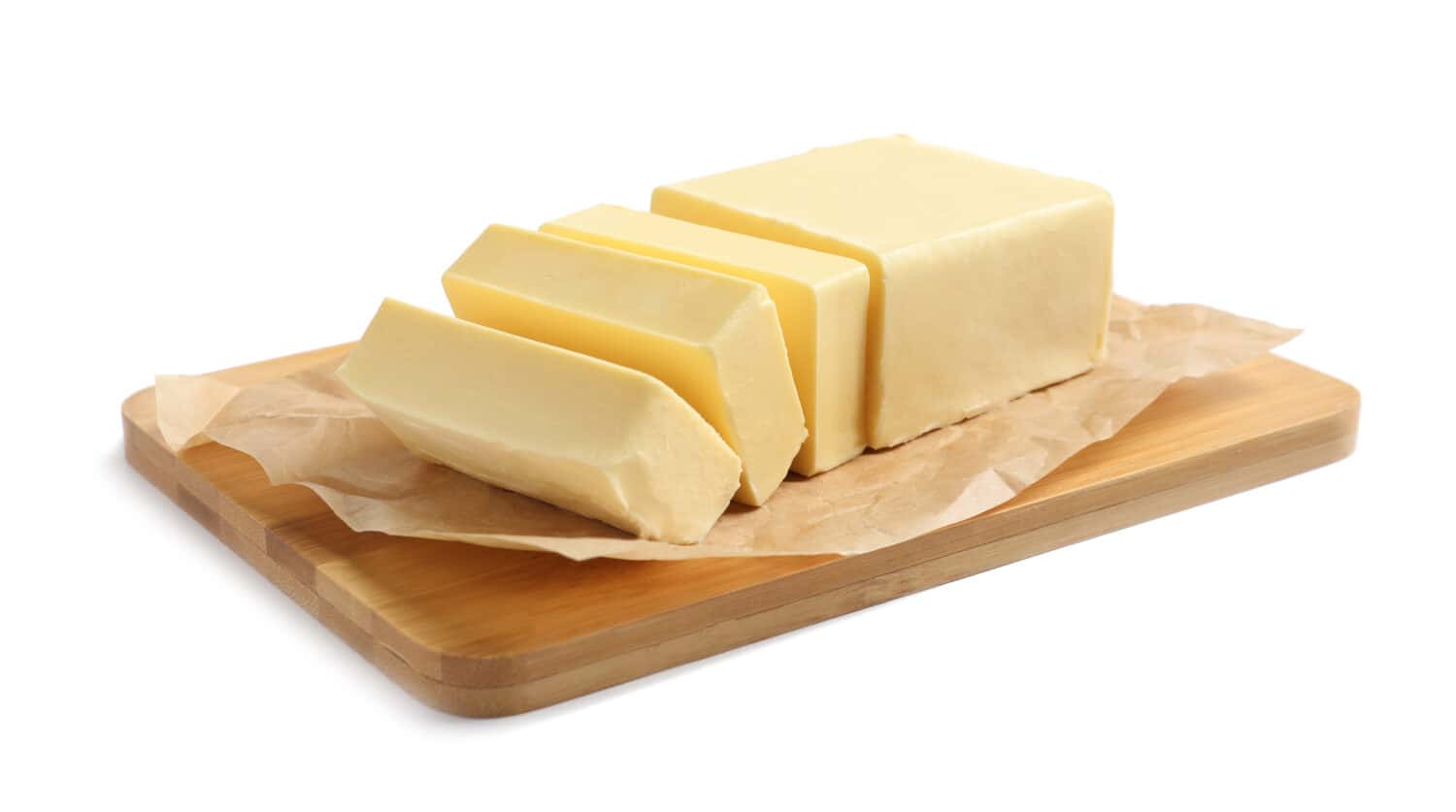
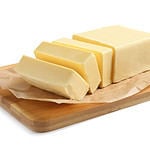
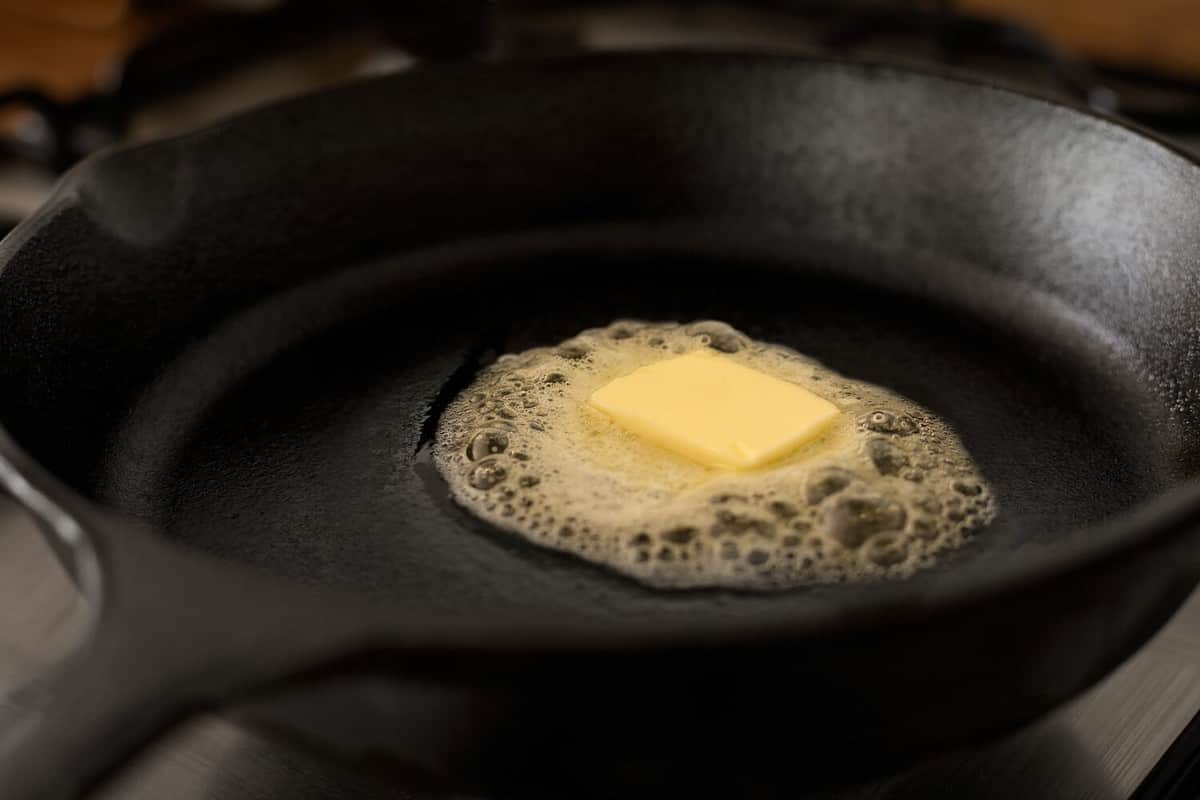
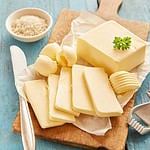




 (No Ratings Yet)
(No Ratings Yet)![]() Loading...
Loading...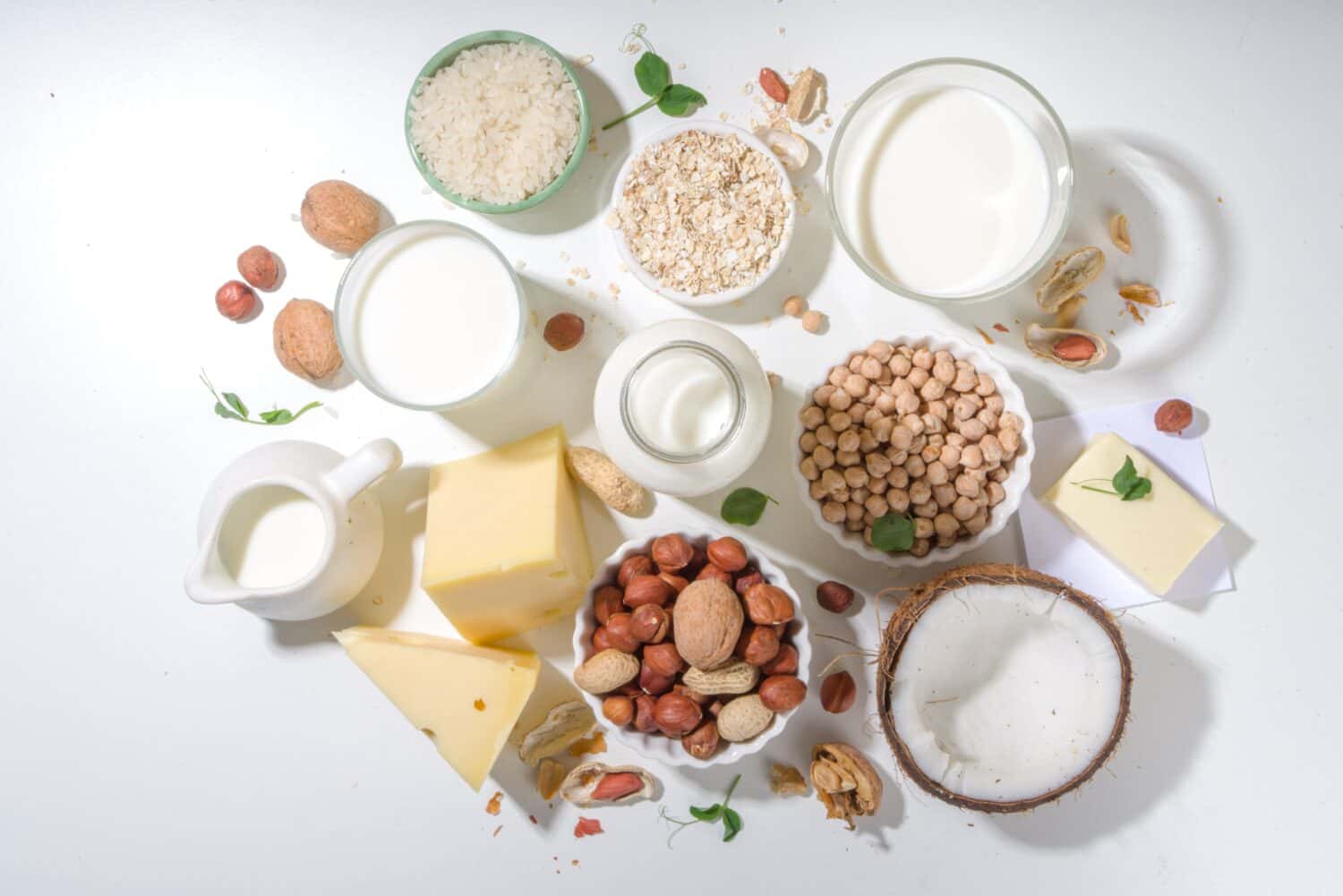
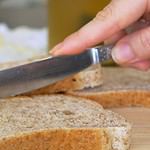




 (No Ratings Yet)
(No Ratings Yet)![]()